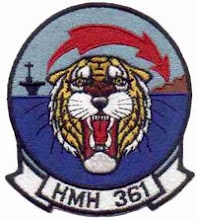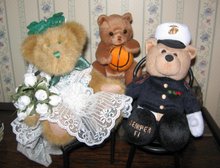ANYBODY STILL AWAKE OUT THERE?

Rumours of Winefred's death have been greatly exaggerated -- it's a matter of being alternately asleep at the wheel, travelling hither and yon ocean to ocean, or trying to put life back in order in the home we haven't been in much this summer.
One day we were in Newfoundland for dinner, and the next day in San Diego for breakfast. A study in contrasts. San Diego is a landscape of burnt toast interrupted by lush greenery, courtesy of mass irrigation borrowed from nearby states. Hangin' out at the beach can look like this:


[Not bad, really.]

 Newfoundland also has a moose population of over 150,
Newfoundland also has a moose population of over 150, 000 on a land mass less than half the size of Norway.
000 on a land mass less than half the size of Norway.["Crazy Moose" -- hat-tip to the Computer Science Dept. at Memorial University of Newf'n'land]
Meanwhile, back in civilization:

BRAVELY VENTURING INTO THE "DMZ"
That's the "Dennis Miller Zone" for you civilians out there, the talk radio guy with the most laid-back temperament and absolutely THE best guest-list.
In his copious free time, the aforementioned Mr. Miller appears on one or two FOXNews shows. It seems that during a recent Half-Hour [Alleged] Comedy Hour (sorry-- I only watched the first one and it reeked), Miller did a riff on Defeatist-in-Chief Senate Majority Loser Harry Reid, which immediately went viral on the internet. No comedy here, folks, just a flat-out statement o' fact and a challenge for Reid to do the honourable thing and, if not fall on his letter-opener, at least shut his Mojave-dry pie-hole. Watch and snort:
In the absence of up-to-date info from The Source on the Field, wouldja just, as the kids text it, STFU -- 'K?
U.S. NAVY TRAGEDY -- NEWFOUNDLAND HEROISM -- 1942 -- LEST WE FORGET
Early August: visited the site of the horrific wreck [February 18, 1942] of the U.S.S. Truxtun near St. Lawrence, Newfoundland.
In the pitch-dark pre-dawn, during a sleet-chucking gale, three American Navy vessels ran aground on massive rocks at the base of 200-foot cliffs that form the southern tip of the Burin Peninsula, between the fishing/mining town of St. Lawrence and the fishing village of Lawn.
The flagship Wilkes eventually floated loose and was saved, but the Truxtun broke up and lost 110 of 156 on board. Those who survived did so because the local inhabitants braved the ice and snow to haul the near-frozen, oil-encrusted bodies of the sailors up the cliffs, all day and into the next evening, and delivered them into the tender care of local women who scrubbed and warmed them back to life. Every available scrap of extra clothing and foodstocks in the St. Lawrence area went to the shipwrecked men.
Below: the cliffs at Chambers Cove where the Truxtun was impaled between the two projecting offshore rocks:

Pink cliffs at the right are still stained with the black oil which was hurled at them from the shipwreck by 40-foot swells.
 To the west of Chambers Cove, at Lawn Head, the Pollux heeled over but remained partially intact. The crew and officers eventually executed the textbook maneuver, attaching a lifeline to the shore and getting as many across as possible. As it turned out, they might have done better to have stayed on board the remnants of their ship. Those who weren't drowned in oil or dashed against the sharp slate cliffs [one sailor was seen decapitated in an instant] were stranded on a frozen ledge. But 140 out of 233 survived, thanks again to the local men who raised them one by one up the cliffs and got them to safety.
To the west of Chambers Cove, at Lawn Head, the Pollux heeled over but remained partially intact. The crew and officers eventually executed the textbook maneuver, attaching a lifeline to the shore and getting as many across as possible. As it turned out, they might have done better to have stayed on board the remnants of their ship. Those who weren't drowned in oil or dashed against the sharp slate cliffs [one sailor was seen decapitated in an instant] were stranded on a frozen ledge. But 140 out of 233 survived, thanks again to the local men who raised them one by one up the cliffs and got them to safety.
A rusted cross, raised by the Catholic parish of St. Thomas Aquinas, pays tribute to the dead of the Truxtun.
In 1954 the American government built the U.S. Memorial hospital to serve the inhabitants of St. Lawrence and Lawn, in gratitude for their sacrifice. (It has since been demolished, and services are provided by a small modern hospital in Burin.)
In 1992, on the 50th anniversary of the disaster, a memorial called "Echoes of Valour" was un
 veiled in St. Lawrence, honouring the perseverance and and sacrifice of the sailors and their rescuers.
veiled in St. Lawrence, honouring the perseverance and and sacrifice of the sailors and their rescuers.Read Cassie Brown's Standing Into Danger, a gripping hour-by-hour account of the sea disaster and the flawed investigation that followed it.
Survivor tal
 es are equally fascinating, such as that of Lanier Phillips, a black cook's-assistant from Georgia, whose life was saved, and changed forever, in 1942 by the first white people to ever show him kindness. Meet him here [CBC video] on the occasion of the christening of the sixth U.S.Navy ship to be the Truxtun, which took place in June of this year.
es are equally fascinating, such as that of Lanier Phillips, a black cook's-assistant from Georgia, whose life was saved, and changed forever, in 1942 by the first white people to ever show him kindness. Meet him here [CBC video] on the occasion of the christening of the sixth U.S.Navy ship to be the Truxtun, which took place in June of this year.This inspiring story and its majestic setting seldom peep on the radar screen of American tourists and admirers of military heroism. Attention should be paid.
And no (in case any of you are wondering), there ain't too many of us who are made of this kind of stuff anymore.
Thank God there are some-- maybe just enough.
HANGIN' OUT -- NEWFOUNDLAND STYLE -- IN ST. JOHN'S






















No comments:
Post a Comment